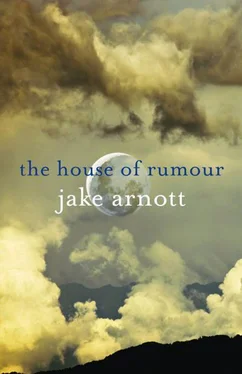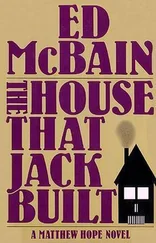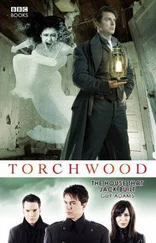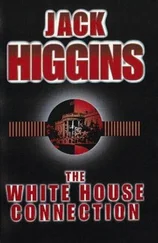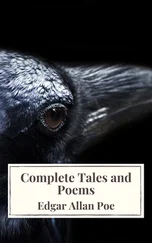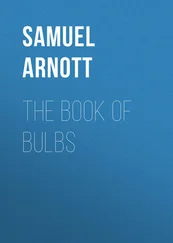He had taught the world its gentle amnesia.
But he let no one judge him. He was still the pure fool.
He looked back again at the black guard. The man kept his distance. Perhaps there was a mutual sense of contempt. Hess entered the summerhouse unescorted.
He had heard strange rumours that the Cold War was coming to an end. A new Russian leader with a policy of openness. The Soviets had always refused to let him go. Until now.
He had regretted nothing, remained loyal until the very end. He closed the door of the summerhouse and went to sit by the window.
That spring there had been an article in a German newspaper claiming that the Russian premier was considering his release. The thought of it filled him with terror.
He looked out of the summerhouse. The Soviet warders would usually watch him through the window. He could see no one. An electrical extension lead for the reading lamp was tied to the latch.
He had always denied their right to try him. Ignored their verdicts and sentences. They had no power to grant him freedom now.
He carefully wound the cord around his neck, judging the distance he would have to fall. It was simple enough, to slip sideways off his chair. Yes. He was ready. Ready to pass the final judgement on himself. Ready to fly once more.
If you can’t change the world, build a spaceship.
Ever since we started dreaming, we dreamt of flight, of escape.
And as I write, the Voyager 1 space probe is 10,843,294,886 miles from the sun, about 0.00183 of a light year away. It’s been travelling for thirty-four years and will soon cross the Heliopause, a terminal boundary where the solar wind’s strength is no longer sufficient to repel those of other systems. Then it will enter the Interstellar Medium, the space between the stars of our galaxy.
It will be the first human artefact to leave our solar system and it might well be what we are judged by one day. About the size and weight of a Volkswagen, it’s moving at 38,185 miles per hour with no particular place to go, though in forty thousand years it will come within 1.6 light years of a star known as AC+793888 in the constellation of Ophiuchus. On the probe is a gold-plated phonographic record encoded with music, sounds and images from earth, intended for any extraterrestrials that might one day encounter it. On the disc are greetings, the breath of fifty-five languages and a message from the Secretary-General of the United Nations, the official spokesman of our world.
Forgive me if I wander — now that I am so close to the end, my mind is firing off in all directions. I can offer few conclusions, no great revelation at the Last Trump. It’s merely been a fool’s journey through an arcana of knowledge. I feel like the solitary space probe, hurtling towards the furthest reaches of deep space, yet still emitting faint signals of particle data. I have no belief in an afterlife, only the unmanned hope that information survives and can continue to be understood. Maybe Voyager will outlast us all and tell our story to the rest of the universe.
As above, so below.
Built by the Jet Propulsion Laboratory, Voyager 1 is still responding to messages and commands sent from its mission control in Pasadena, now an industrial complex built on the scrubland of the Arroyo Seco where Jack Parsons and his group tested rocket engine prototypes over seventy years ago. I remember the night of the party there back in ’41 and what might have been a special Mass to lure Rudolf Hess to Britain. I see Mary-Lou’s face haloed by firelight, naked figures flickered in shadow, and I think of it more as the site of my own foolish emotional trajectory. The brief euphoria; the abrupt falling to earth.
But it was there Jack Parsons dreamt of his own cosmic journey. He has since become a cult figure with an counter-culture mythology so rare and glamorous that it’s sometimes hard to believe he actually existed. Always on the edge of fantasy and reality, he embodies that wondrous time when magic and technology merged, and science fiction became fact. And the conventional world eventually recognised his contribution to space exploration. In 1972 the International Astronomical Union named a crater on the moon after him (on the dark side, naturally).
Mary-Lou once said that it was I who never got over him and she was right. I couldn’t help feeling eclipsed by him when I was with her. Ours was a tentative relationship, to say the least. The uncertainty that comes when two people know each other so well. I knew that it was never going to be a grand passion and for a while I was happy enough to hold on to what we always had. There was this warm charge of potential, as if it might be the beginning of something. I just wish it could have been more than that.
I wasted far too much time trying to make sense of things. Asking her stupid questions, brooding on all the strange connections in our past. I’m still doing it now. It’s clear that Astrid, the German fortune-teller who lived at the commune in Pasadena, was the same woman mentioned in Trevelyan’s manuscript, and though Mary-Lou didn’t know about her having any direct involvement with the Hess case, she was sure that Astrid had been arrested as part of a Gestapo crackdown on astrologers. So I did my own reading on the subject and found out that on 9 June 1941, the Reich Main Security Office ordered Aktion Hess , a widespread arrest of astrologers and occultists. Books and papers were confiscated; hundreds of men and women were questioned and many were detained in concentration camps.
Trevelyan mentions this but he overlooks the possibility that this action might have been an aspect of German disinformation — that they too could have used the Hess affair to confuse their enemies. It certainly caused the Soviets to distrust British Intelligence at a time when it was warning them of an impending invasion. The Nazis’ response to the Deputy’s flight stressed an occult symbolism right from the start and their own House of Rumour became a vortex for conspiracy theories. Aktion Hess could well have been an exercise in counter-intelligence since some of its guidelines are patently absurd. A questionnaire drawn up by an SS ‘ideological research’ unit, to be used during interrogations, lists as question 11: Should members of different races (Aryans, Jews, Chinese and Negroes) born at the same place under identical constellations expect the same astrological interpretations? If yes, then do you not admit the racial requirements of fate? But then such is the logic of National Socialism. Perhaps Hitler was determined to prove to the world that he no longer feared any superstition. He ordered the surprise attack on Russia thirteen days later on 22 June, the precise anniversary of Napoleon’s ill-fated campaign against Imperial Russia, and he gave it the code name Barbarossa, after the doomed emperor who drowned in the River Saleph during the disastrous Third Crusade.
‘When Barbarossa begins,’ Hitler declared, ‘the world will hold its breath.’
The largest military operation in human history and the most devastating in loss and suffering: this was the destiny of the Nazi Weltanschauung . Along a frontier eighteen hundred miles long, Germany and her allies massed 4.5 million troops with 600,000 motor vehicles, 7,000 field guns, 3,580 tanks, 1,830 aircraft and 750,000 horses. The Soviets were utterly unprepared for the attack. Stalin deliberately ignored clear warnings, even from his own Red Orchestra intelligence network, denouncing them as disinformation. When the mobilisation against the invasion did come, however, the struggle became ruthless and apocalyptic. ‘If the Germans want a war of extermination,’ Stalin announced in a speech marking the anniversary of their great utopian revolution, ‘they shall have it.’
Читать дальше
